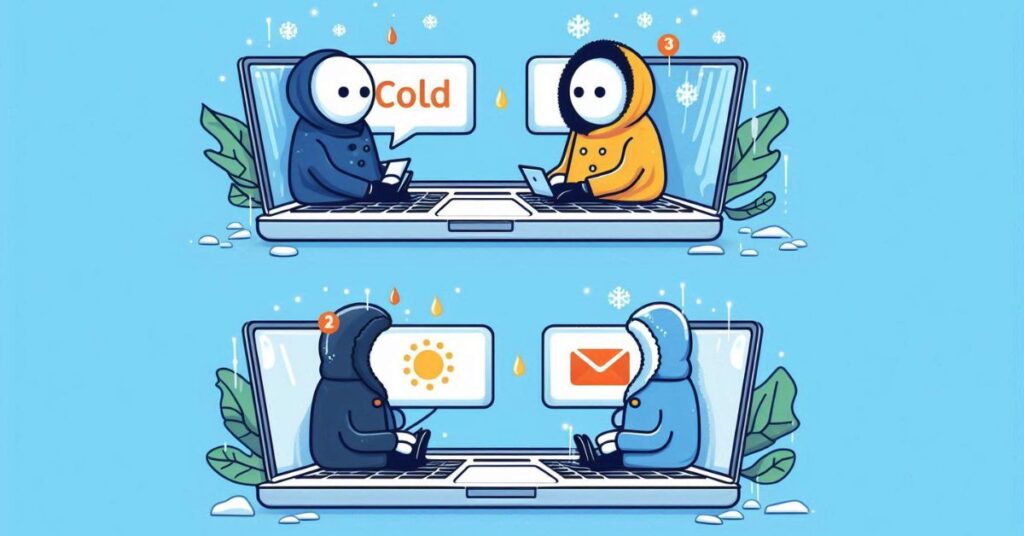
The Email Outreach Dilemma: Cold or Warm?
You need to reach potential clients, but should you send a cold email or a warm email? The answer depends on your relationship with the recipient—and your goals.
Cold emails are like knocking on a stranger’s door. Warm emails? More like catching up with an old friend. Both have their place in sales and marketing, but using them effectively requires understanding their key differences.
What Is a Cold Email?
A cold email is your first contact with someone who doesn’t know you. No prior interaction. No warm introduction. Just you, your pitch, and the hope of a reply.
When to Use Cold Emails:
✔ Prospecting – Reaching out to potential clients or partners. ✔ Networking – Connecting with industry leaders or influencers. ✔ Event Invitations – Promoting webinars or conferences to new audiences.
Cold Email Best Practices:
- Keep it short – Get to the point quickly.
- Personalize – Mention something specific about the recipient (e.g., a recent article they wrote).
- Clear CTA – Ask for a meeting, reply, or next step.
Example:
“Hi [First Name],I noticed your recent post on [Topic]. Loved your take on [Specific Point].I help businesses like yours [solve X problem]. Would you be open to a quick chat next week?”
What Is a Warm Email?
A warm email goes to someone who already knows you—even just a little. Maybe they’ve engaged with your content, attended an event, or connected on LinkedIn.
When to Use Warm Emails:
✔ Follow-ups – After meeting at a conference or webinar. ✔ Re-engaging past leads – People who showed interest but didn’t convert. ✔ Customer retention – Upselling or checking in with existing clients.
Warm Email Best Practices:
- Reference past interactions – “Great meeting you at [Event]!”
- Offer value – Share a resource or insight they’d find useful.
- Be conversational – Less formal, more friendly.
Example:
“Hi [First Name],It was great chatting at [Event]. I loved your thoughts on [Topic].I came across [Resource] and thought you might find it helpful. Let me know if you’d like to discuss further!”
Cold Email vs Warm Email: Key Differences
| Factor | Cold Email | Warm Email |
| Relationship | No prior contact | Some prior interaction |
| Response Rate | Lower (1-5%) | Higher (10-30%) |
| Tone | Professional, concise | Friendly, conversational |
| Goal | Initial connection | Deeper engagement |
Which One Should You Use?
- Cold emails work best for new lead generation.
- Warm emails excel at nurturing relationships and closing deals.
Ready to upgrade? Start with a free trial of Salesix AI and see the difference AI can make.





[…] Buying email lists is a rookie mistake—it hurts deliverability and engagement. Instead, try: […]